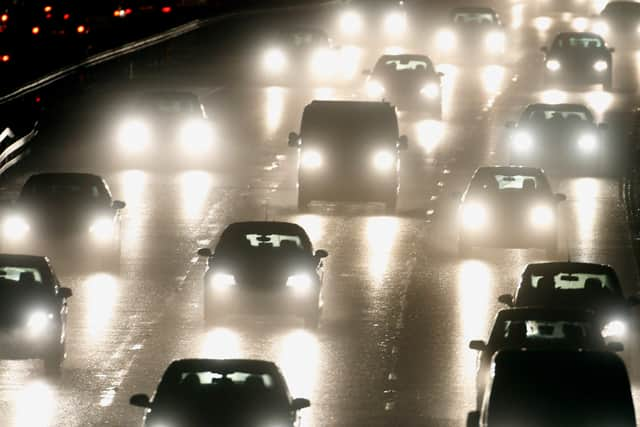Clocks go back: 5 driving in the dark tips - including checking car lights and clear windscreens
and live on Freeview channel 276
With the clocks due to go back in the UK this weekend, Britain is bracing itself for less and less daylight as we head further into the cold and bleak winter months. It will be the first clock change for over seven months, with the clocks going forward back in March.
Clocks are set to go back at 2am on Sunday, 30 October and this means that people sleeping through the night will get an extra hour in bed. Smartphones usually automatically update, as well as the clocks in some newer model cars, however old style clocks will need to be manually changed.
Advertisement
Hide AdAdvertisement
Hide AdSince mid-September, sunset has been getting earlier and earlier with the sunset time before the clocks go back taking place at 5:40pm. This means that as of Monday, October 31, many commuters in the UK will be driving home from work in the dark, with sunset to occur at around 4:30pm.
Driving in the dark can pose many more risks than if you were to drive during the day, with issues such as visibility an issue. Other risks include wildlife, people dressed in dark clothing and more.
Select Car Leasing has shared its top five tips for driving in the dark to ensure road users stay safe this winter. These tips range from being more alert to not being tired when you drive and more.
5 tips for driving in the dark
1. Check and use your lights appropriately
Checking and using lights is something drivers do regularly, but it holds more importance during the winter months. If you find that a bulb needs changing, get it done as soon as possible.
Advertisement
Hide AdAdvertisement
Hide AdTo ensure full safety, it is recommended that you turn your lights on around one hour prior to sunset, and an hour after sunrise to make your car is as visible as possible on the roads. It is also recommended to use a full beam on country roads, which are often unlit.
2. Don’t stare at oncoming vehicles
Headlights are eye-catching, and it’s easy to have a prolonged look at a passing car but it’s also easy to get dazzled by them. This can temporarily impair your vision, causing you to become a hazard to yourself and other drivers.
Frequently check the lines of the road to make sure you’re positioned properly and do not pose a risk to yourself or others.


3. Watch out for pedestrians, cyclists and animals
This tip sounds routine, and something drivers should always do regardless of the time of the day. However, during the winter months the elderly, children and cyclists are at a higher risk.
Advertisement
Hide AdAdvertisement
Hide AdTake extra care when driving around schools and in residential areas so you have time to react if someone does happen to step out in front of you. Also, remember that around Halloween some people will be dressed up, sometimes in dark outfits, which pose a bigger risk to drivers.
4. Keep windows clean
Again, what is seemingly a routine tip carries extra weight at this time of year due to leaves and condensation which can significantly impair your vision on the road. Windows can also steam up on the inside, so make extra time for your journey to get your windscreen as clear as possible.
A popular trick for getting rid of steamy windows is using the heater. Whilst this does work, and makes your screen clearer, it can blow dirt on to the windscreen which builds up a haze like effect over time.
5. Don’t drive tired
All year round it is widely advertised that you do not drive tired as one lapse in concentration could change yours, or someone else’s life, for good. With an hour less of light in the evenings, your melatonin levels may be higher, leaving you feeling a little more tired than normal.
Comment Guidelines
National World encourages reader discussion on our stories. User feedback, insights and back-and-forth exchanges add a rich layer of context to reporting. Please review our Community Guidelines before commenting.
